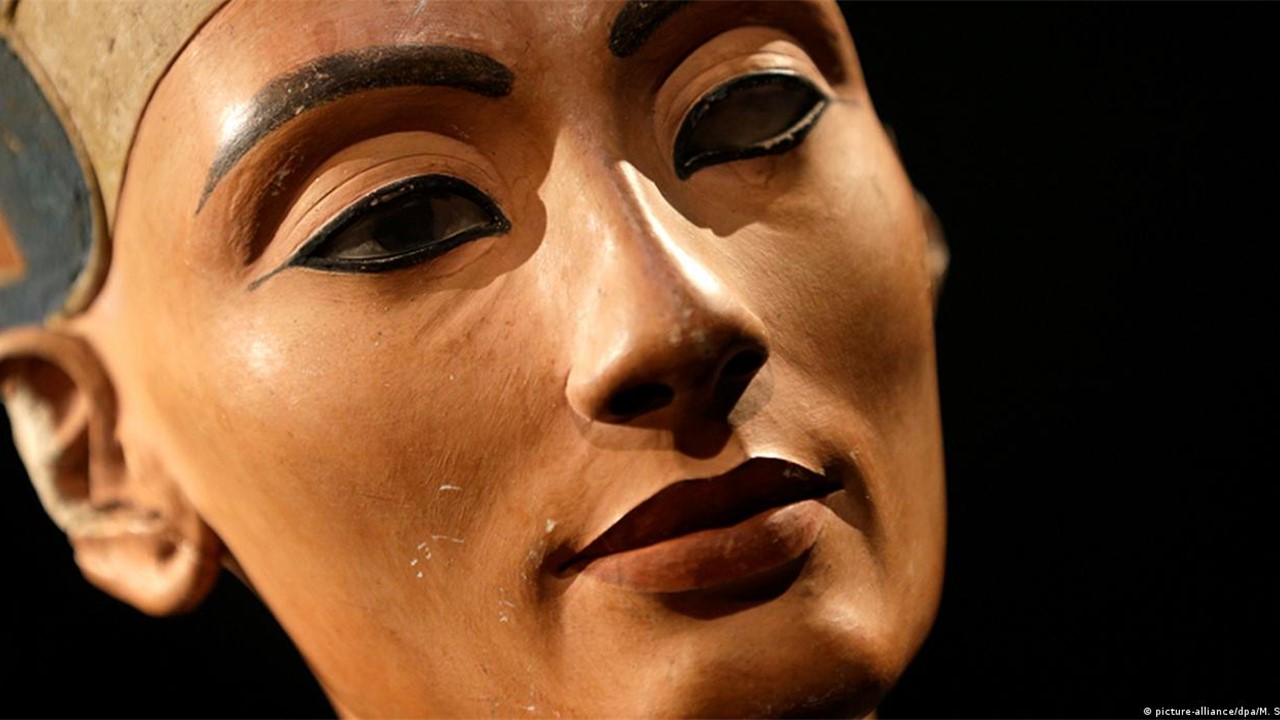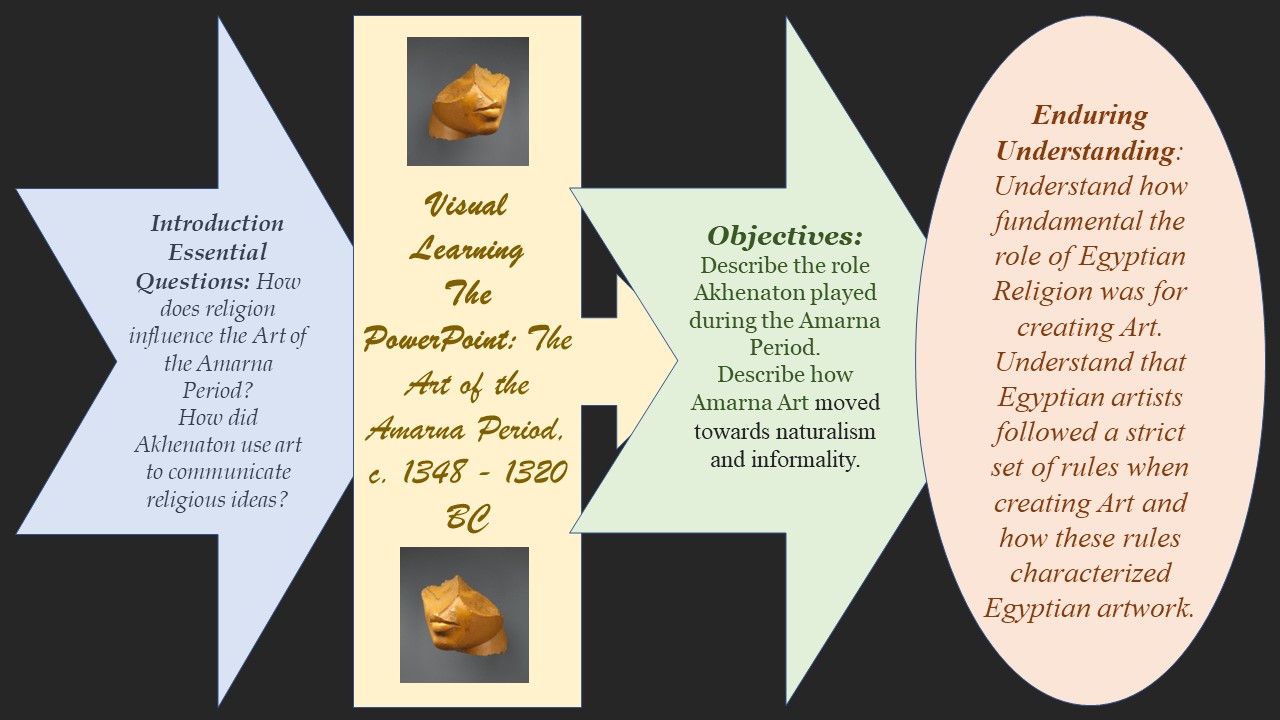
https://www.dw.com/en/egypt-vows-to-step-up-hunt-for-nefertiti/a-18753507
“With the move to Amarna the art becomes less exaggerated, but while it is often described as ‘naturalistic’ it remains highly stylized in its portrayal of the human figure. The royal family is shown with elongated skulls and pear-shaped bodies with skinny torsos and arms but fuller hips, stomachs, and thighs. The subject matter of royal art also changes. Although formal scenes of the king worshipping remain important there is an increasing emphasis on ordinary, day-to-day activities which include intimate portrayals of Akhenaten and Nefertiti playing with their daughters beneath the rays of the Aten… While traditional Egyptian art tends to emphasize the eternal, Amarna art focuses on the minutiae of life which only occur because of the light – and life-giving power of the sun.” writes Dr Kate Spence for BBC History and I use this quote as an introduction to The Art of the Amarna Period, my new BLOG POST on Egyptian Art. http://www.bbc.co.uk/history/ancient/egyptians/akhenaten_01.shtml
I would like to continue with another short quote by Dr Kate Spence “Akhenaten is a source of endless fascination and speculation – this often masks the fact that we actually know very little about him.” This quote can actually mark the beginning of any Unit on the Art of the Amarna Period. I have been teaching this Unit for years and I can only testify to the fact that the Amarna Period allure, attracts my student’s attention and captivates their imagination. They like to read and listen to their teacher describe the genesis of an almost “monotheistic” religion, the dynamics within a powerful royal family, the building of a new capital city, and how Egyptian Art of the period moved towards naturalism and informality.
The Amarna Idiom is an artistic style that captivates human reaction. My students are “hypnotized” by the unique Amarna pictorial beauty of deformation. They are charmed, yet question how in the depiction of faces, thin, long necks, hold greatly elongated skulls… facial folds are the norm, narrow, slitted eyes are prominent, and jaws seem to be “hanging” low. The Amarna style body rendering amazes my students as well, particularly the discrepancy between the upper, lower, and middle parts of the human body… the dropped, thin shoulders, heavy potbelly, large hips, and thighs, and the rather thin almost frail, legs.
Known especially for Akhenaton’s radical religious reforms, the Amarna period leads to endless speculation about the Pharaoh’s background and motivation, the role played by Nefertiti and the Royal women, and the new artistic quest for naturalism and informality. From ca. 1353 to 1336 BC, Egypt stood still… went through changes, the country never experienced before… and then, radically, once more, moved back to its familiar norms!
There is so much to explore… A PowerPoint, presentation of over fifty artifacts will assist us in further understanding the ‘secrets’ of Art during the Amarna Period, and our 4-Steps to Success Lesson Plan will keep us… on track!

For the PowerPoint ‘The Art of the Amarna Period’, please… Check HERE!
For the New Kingdom/Amarna Period Timeline, please… Check HERE!
For a Teacher Curator BLOG POST on The Formidable Queen Tiye, mother of Pharaoh Akhenaton, please check… https://www.teachercurator.com/ancient-egypt/the-formidable-queen-tiye/?fbclid=IwAR2eC69pTXFUqA3Yg2fR4SoWp_3dmiezQ-hLeNt83piI-sRSLLfGTl0twv0
Enjoy a BBC Documentary titled Amarna, Egypt’s Lost City… https://www.youtube.com/watch?v=1ucVQj9eNBA
Two more Videos about Akhenaten, Nefertiti, and Three Daughters and the Portrait head of Queen Tiye with a crown of two feathers by Khan Academy… https://www.khanacademy.org/humanities/ancient-art-civilizations/egypt-art/x7e914f5b:new-kingdom-third-intermediate-period/v/house-altar-depicting-akhenaten-nefertiti-and-three-daughters and https://www.khanacademy.org/humanities/ancient-art-civilizations/egypt-art/x7e914f5b:new-kingdom-third-intermediate-period/v/portrait-head-of-queen-tiye-with-a-crown-of-two-feathers
A National Geographic Video on The Mystery of Queen Nefertiti | Lost Treasures of Egypt… https://www.youtube.com/watch?v=Eex2Vu6iGy8